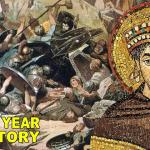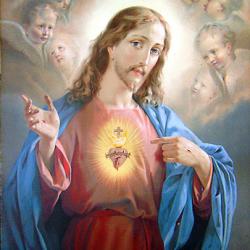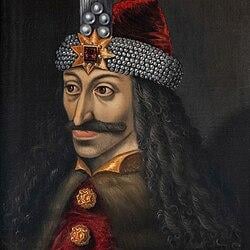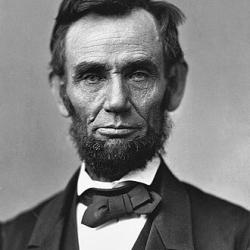Last Time on Heck of a Ride Around The Sun
Popes And Councils Of The 5th, 6th And 7th Centuries HOARATS
8th Century 700 – 799
Popes 85 – 96
4 Saint Popes
8 Non – Sainted Popes
1 Pope Elect
c. 700 CE “Be Thou My Vision” (Old Irish: Rop tú mo baile or Rob tú mo bhoile) is a traditional Christian hymn of Irish origin. The words are based on a Middle Irish poem that has traditionally been attributed to Dallán Forgaill.
The best-known English version, with some minor variations, was translated in 1905 by Mary Elizabeth Byrne, then made into verse by Eleanor Hull and published in 1912. Since 1919 it has been commonly sung to an Irish folk tune, noted as “Slane” in church hymnals, and is one of the most popular hymns in the United Kingdom.
Saint Anne is a Makurian wall painting estimated to have been painted between the 8th and 9th centuries,[1] painted al secco with tempera on plaster. The anonymous work was found at the Faras Cathedral within old Nubia in Faras Wadi Halfa present-day Sudan.
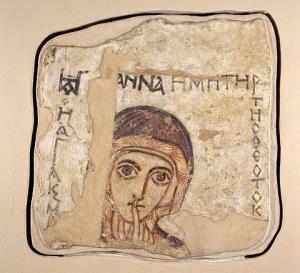
Sinbad the Sailor (/ˈsɪnbæd/; Arabic: سندباد البحري, romanized: Sindibādu l-Bahriyy or Sindbad) is a fictional mariner and the hero of a story-cycle. He is described as hailing from Baghdad during the early Abbasid Caliphate (8th and 9th centuries A.D.). In the course of seven voyages throughout the seas east of Africa and south of Asia, he has fantastic adventures in magical realms, encountering monsters and witnessing supernatural phenomena.
Pope # 85 Non – Saint John VI(October 30, 701 – January 11, 705 (3 years, 73 days) The only pope who came from Asia Minor.
Pope # 88 Non – Saint Constantine (March 25, 708 – April 9, 715 (7 years, 15 days) Last pope to visit Greece while in office, until John Paul II in 2001.
Pope # 90 St Gregory III (March 18, 731 – 28 November 28, 741) (10 years, 255 days) The last pope from Syria. The third pope to come from a Muslim country. The third pope to bear the same name as his immediate predecessor. Last pope to have been born outside Europe until the election of Francis in 2013.
731 – The Ecclesiastical History of the English People written by Dr. St. Bede the Venerable It’s a history of the Christian Churches in England; its main focus is on the conflict between the pre-Schism Roman Rite and Celtic Christianity. It is considered one of the most important original references on Anglo-Saxon history, and has played a key role in the development of an English national identity.
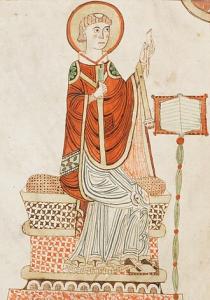
The Venerable Bede writing. Detail from a 12th century codex
Pope-elect Stephen (March 22, 752 – March 25, 752) (Never took office as pope) Died three days after his election, having never received episcopal consecration. Some lists still include him. The Vatican sanctioned his addition in the sixteenth century; removed in 1961. He is no longer considered a pope by the Catholic Church.
756 – The Papal States officially the State of the Church were a series of territories in the Italian Peninsula under the direct sovereign rule of the pope from 756 until 1870. They were among the major states of Italy from the 8th century until the unification of Italy, between 1859 and 1870.
Pope # 95 Non – Pope Adrian I (February 1, 772 – December 26, 795) (23 years, 328 days) Pope during the Second Council of Nicaea (787), the seventh ecumenical council accepted by the Catholic and Eastern Orthodox churches.
Catholic Ecumenical Council # 7
The Second Council of Nicaea (787)
This council restored the veneration of icons (condemned at the Council of Hieria, 754) and repudiated iconoclasm.
The Viking Age (793–1066 CE) was the period during the Middle Ages when Norsemen known as Vikings undertook large-scale raiding, colonising, conquest, and trading throughout Europe and reached North America.
Pope # 96 St Leo III (December 26, 795 – 12 June 12, 816) (20 years, 169 days) Crowned Charlemagne emperor on Christmas Day, 800, thereby initiating what would become the Holy Roman Empire, requiring the imprimatur of the pope for its ruler’s legitimacy.
9th Century 800 – 899
Popes 97 – 117
4 Saint Popes
1 Great Pope
17 Non – Sainted Popes
0 Anti – Popes
809 – “Veni Creator Spiritus” (Come, Creator Spirit) is a traditional Christian hymn believed to have been written by Rabanus Maurus, a ninth-century German monk, teacher, archbishop, and saint. When the original Latin text is used, it is normally sung to a Gregorian Chant tune first known from Kempten Abbey around the year 1000. The hymn has been translated and paraphrased into several languages, and adapted into many musical forms, often as a hymn for Pentecost or for other occasions that focus on the Holy Spirit.
Valentine (August 31, 827 – October 10, 827) (40 days)
is Pope #

He was unusually close to his predecessor, Pope # 99 Non-Saint Eugene II, (May 8, 824 – August 27, 827) (3 years, 111 days) and was rumoured to be his son or his lover, or something and became pope before being ordained as a priest. He was a nobleman and elected by nobility, which later became the custom.
9th century: Playing card in Tang Dynasty China is made.
Pope # 105 St Nicholas I the Great (April 24, 858 – November 13, 867) (9 years, 203 days) His claims of supremacy over territories outside his jurisdiction, the incorporation of the filioque in the Constantinopolitan Nicene creed, and his pressure on Bulgaria to remain under Roman rule, provoked tensions between Rome and Constantinople, leading to his excommunication by the Greeks at the fourth Council of Constantinople.
Nicholas I asserted that the pope should have suzerainty over all Christians, even royalty, in matters of faith and morals.
Nicholas refused King Lothair II of Lotharingia‘s request for an annulment of his marriage to Teutberga. When a council pronounced in favor of annulment, Nicholas I declared the council deposed, its messengers excommunicated, and its decisions invalid.
Pope # 106 Non – Saint Adrian II (December 14, 867 – December 14, 872) (5 years, 0 days) Pope during the Council of Constantinople IV (869), the eighth ecumenical council of the Catholic Church.
Catholic Ecumenical Council # 8
Fourth Council of Constantinople (Catholic) (869–870)
This Council deposed Patriarch Photios I of Constantinople as an usurper and reinstated his predecessor Saint Ignatius. Photius had already been declared deposed by the Pope, an act to which the See of Constantinople acquiesced at this council. The previous seven ecumenical councils are recognized as ecumenical and authoritative by both Eastern Orthodox and Catholic Christians. This council and all councils afterwards are not recognized by the Orthodox.
January 897 – The Cadaver Synod
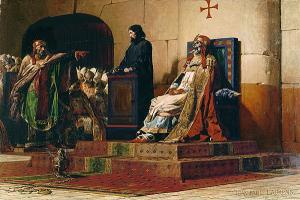
Jean-Paul Laurens, Le Pape Formose et Étienne VI
(“Pope Formosus and Stephen VI”), 1870
Lambert II orders Pope # 113 Non – Sainted Stephen VI (May 22, 896 – August 14, 897) (1 year, 84 days)to exhume the nine-month-old cadaver of former Pope # 111 Non – Sainted Formosus October 6, 891 – April 4, 896) (4 years, 181 days) to redress him in papal robes, and have him put on trial while seated in a chair at St. Peter’s. Formosus is ‘convicted’ of several crimes, his fingers of consecration are cut off, and the body is stripped of his vestments.
Legendary Pope Joan (855–857) was, according to legend, a woman who reigned as pope for two years during the Middle Ages. Her story first appeared in chronicles in the 13th century and subsequently spread throughout Europe. The story was widely believed for centuries, but most modern scholars regard it as fictional.
1866 – The Greek author Emmanuel Rhoides‘ publishes The Papess Joanne. The novel is an exploration of the European legend of Pope Joan, a woman who secretly reigned as pope some time in the late ninth century. It was admired by Mark Twain.
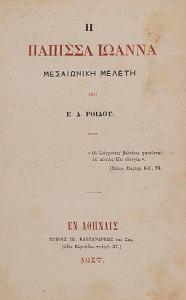
874 – According to the ancient manuscript Landnámabók, the settlement of Iceland began in 874 AD when the Norwegian chieftain Ingólfr Arnarson became the first permanent settler on the island. In the following centuries, Norwegians, and to a lesser extent other Scandinavians, immigrated to Iceland, bringing with them thralls (i.e., slaves or serfs) of Gaelic origin.
10th Century 900 – 999
Popes 118 – 139
0 Sainted Popes
22 Non – Sainted Popes
5 Anti – Popes
Black Fox of Lorne is a 1956 children’s historical novel written and illustrated by Marguerite de Angeli. This Newbery Honor Book is about tenth-century Viking twins who shipwreck on the Scottish coast and seek to avenge the death of their father. They encounter loyal clansmen at war, kindly shepherds, power-hungry lairds, and staunch crofters.
Author Marguerite de Angeli had earlier won the Newbery Medal for excellence in American children’s literature for her 1949 novel The Door in the Wall.
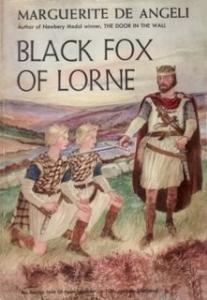
Hush: An Irish Princess’ Tale is a 2007 young adult novel written by Donna Jo Napoli. It appears in numerous school and public library reading lists. The book depicts the world of the slave trade around the year 900 in Ireland.
Pope # 119 Sergius III (January 29, 904 – 14 April 14, 911)(7 years, 75 days)”Saeculum obscurum” begins. The first pope to be depicted with the Papal Tiara.
Pope # 130 Non – Sainted John XII (January 29, 904 – 14 April 14, 911) (7 years, 75 days) He died on May 14, 964. According to Liudprand of Cremona, John died whilst enjoying an adulterous sexual encounter outside Rome, either as the result of apoplexy, or at the hands of an outraged husband.
Erik Thorvaldsson (c. 950 – c. 1003), known as Erik the Red, was a Norse explorer, described in medieval and Icelandic saga sources as having founded the first European settlement in Greenland. He most likely earned the epithet “the Red” due to the color of his hair and beard. According to Icelandic sagas, he was born in the Jæren district of Rogaland, Norway, as the son of Thorvald Asvaldsson. One of Erik’s sons was the well-known Icelandic explorer Leif Erikson.
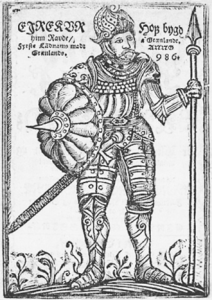
Dr. St. Gregory of Narek (c. 950 – 1003/1011) was an Armenian mystical and lyrical poet, monk, and theologian. He is venerated as a saint in the Armenian Apostolic and Catholic Churches and was declared a Doctor of the Church by Pope Francis in 2015.
Between 975 and 1025 Beowulf is written.
Pope # 137 Non – Sainted John XV (August 20, 985 – April 1, 996) (10 years, 225 days)The first pope to formally canonize a saint, St. Ulrich of Augsburg – (890 – July 4, 973),
Last Quarter of 10th Century – Bishop Petros with Saint Peter the Apostle is a Nubian Christian wall painting from the last quarter of the 10th century. Made with tempera on silt plaster using an al secco fresco technique, it depicts Petros, the bishop of Faras between 974 and 997. The anonymous work was discovered in the ruins of Faras Cathedral, an important religious centre of Nubia, in modern Sudan. Rescued from flooding when Lake Nasser was created, since 1964 it is part of the Faras Gallery of the National Museum in Warsaw.
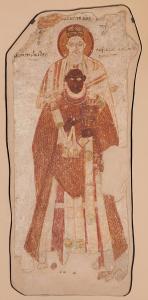
Pope # 138 – Non – Sainted Gregory V (May 3, 996 – February 18, 999) (2 years, 291 days) The first official German pope and fifth not to use his personal name (Bruno). Henceforth, this decision became tradition among future popes.
Pope # 139 – Sylvester II (April 2, 999 – May 12, 1003) (4 years, 40 days) Born Gerbert, a subject of the Kingdom of France, who was the first French (Occitan) pope. LAST POPE OF THE MILLENIUM.
HOARATS
To Understand
What I love and How I Write About History
Hit the Link Above.
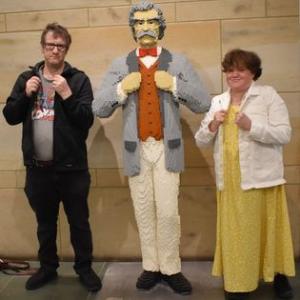
To understand about this particular series I’m writing about, please read
The Catholic Bard’s Guide To History Introduction
And to view a historical article click on


